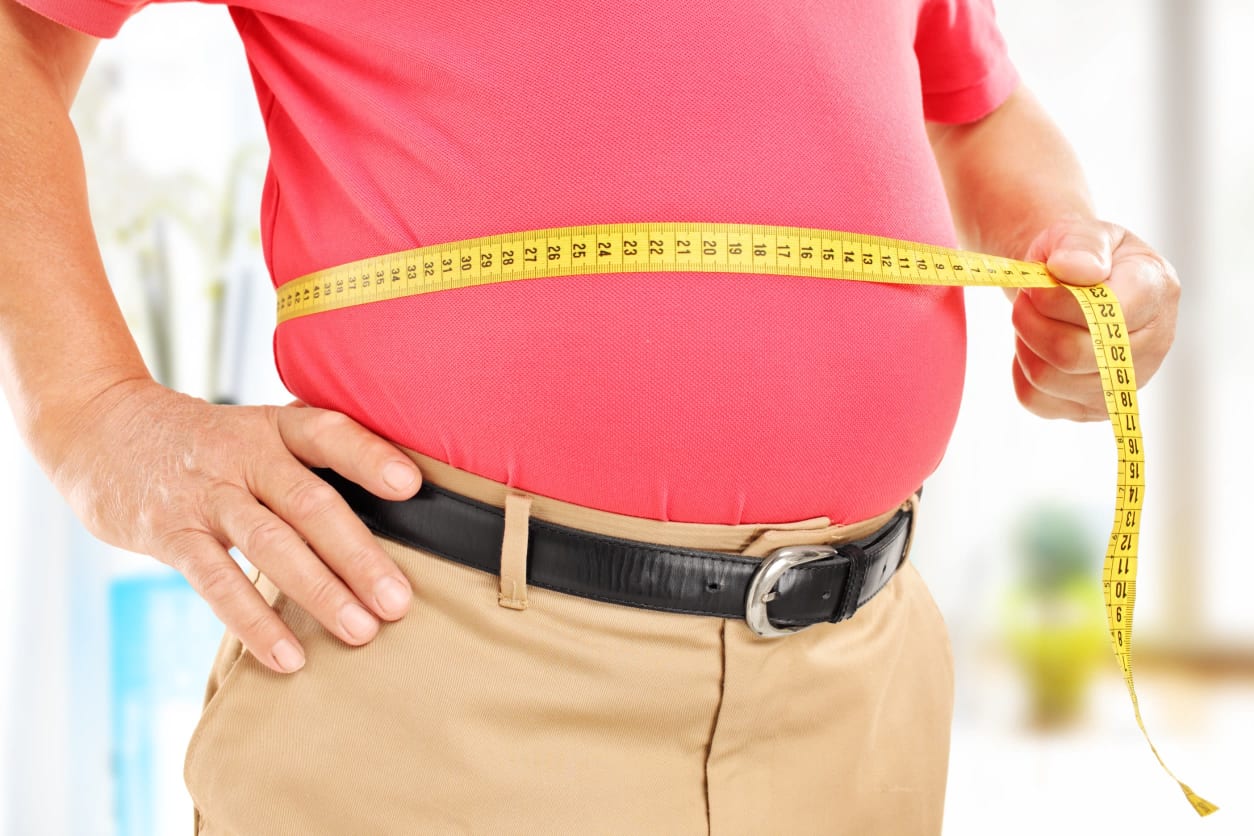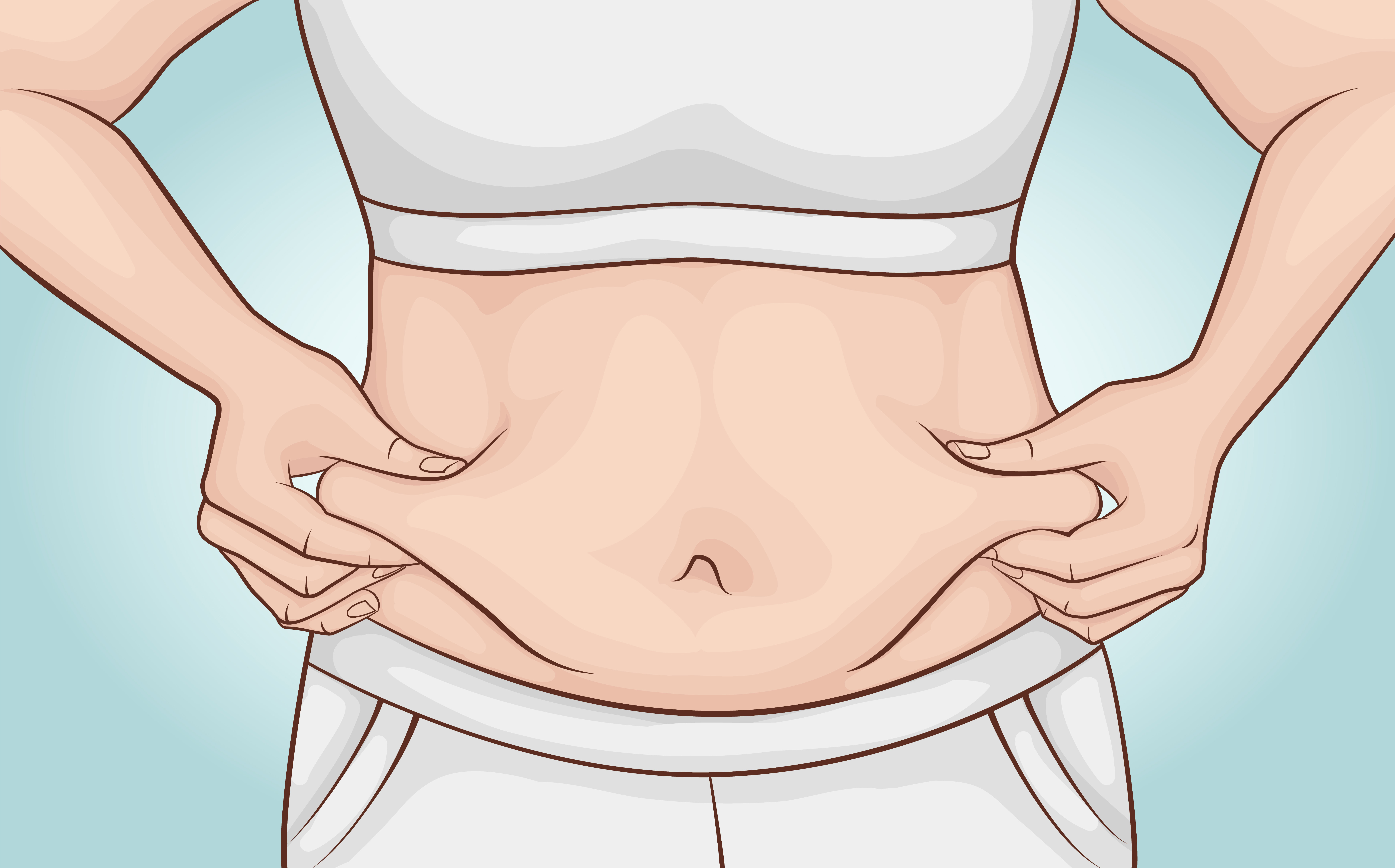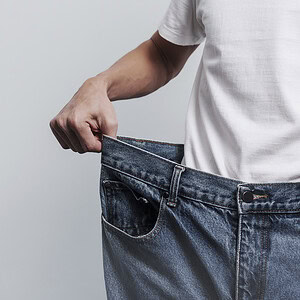Belly fat can be tough to shift, but too much can come with risks. We take a look at the underbelly of active fat.
Aesthetically speaking, nobody should worry about a bit of jiggle; but when it comes to health, belly fat can be a concern.
A growing waistline can be the result of two types of fat.
Firstly, there’s subcutaneous fat, which lies just beneath the skin. On women in particular, this might accumulate in the lower body, around the hips, thighs and bottom (think, pear shape).
On the belly, this is the ‘jiggly’ type of fat that you can poke and pinch with your fingers.
Whilst too much subcutaneous fat isn’t necessarily healthy, having too little can also be a concern.
This is because it provides protection for your body and acts as a layer of insulation to help control your body temperature.
The other type, visceral fat, lies deep within the abdomen (think, apple shape), accumulating around organs including the stomach, liver and intestines, pushing the stomach out from the inside.
This is what we tend to associate with a harder, less-pinchable ‘beer gut’.
Belly fat risks
Until fairly recently, it was assumed that all fat cells did was store fat. But research has discovered that they are, in fact, metabolically ‘active’, secreting hormones and chemicals that help to keep our bodies ticking over.
In adipose tissue, for example, adiponectin helps to improve the body’s sensitivity to insulin, whilst the hormone leptin controls appetite.
Excess visceral fat, however, has been associated with negative outcomes.
In April, the American Heart Association published a statement saying that people with excess fat around the mid-section (known as abdominal obesity) have an increased risk of heart disease, even if their BMI is within a healthy weight range.
According to the World Health Organization, a waist circumference measuring 94cm (37”) or more for men, and 80cm (31.5”) or more for women is cause for concern.
Waist circumference rather than BMI tends to be a better indication of dangerous levels of visceral fat since, as can be seen in muscular athletes, a heavy weight and subsequently high BMI is not necessarily indicative of fat levels.
What leads to belly fat?
But sticking a photo of the Baywatch cast on your fridge for ‘fitspiration’ may not help, because several factors can influence how much visceral fat we carry.
“This can include age, stress levels, sex hormone levels and the makeup of the gut microbiome,” says Grant.
“As we age, belly fat can get harder to shift as our body begins to lose the ability to burn abdominal fat for energy. This is especially true for women.”
Grant cites one study that found average levels of visceral fat in women almost quadrupled between the ages of 25 and 65. Visceral fat increased for men too, but it was only double.
High stress levels, she adds, may also play a role: “Studies have shown that visceral fat storage is increased when our sympathetic nervous system (fight or flight) is activated frequently and our stress hormone levels are high.”

How to lose belly fat
Despite what many internet ads would have us believe, we can’t target specific areas for weight loss, so don’t waste your pennies on pills or workouts promising to target the tummy region.
The good news, however, is that losing weight overall will help to shrink your waistline, and visceral fat responds fastest to lifestyle changes.
“Improving the nutritional quality of our diet and being physically active are both powerful ways of losing visceral fat,” says Grant.
She cites a study that found a low carbohydrate, Mediterranean diet — typically rich in brightly coloured fruits and vegetables, legumes, nuts, beans, fish and monounsaturated fats such as olive oil — was more effective than a low fat diet in reducing visceral fat.
“Other mono- and polyunsaturated fats appear to be equally protective against visceral fat,” adds Grant.
“Good sources of the former include almonds, cashew nuts and avocados, whilst the latter includes walnuts, sunflower seeds, flax seed and fish such as salmon, mackerel, herring and trout.”
She also says that simple carbohydrates are “best avoided if you’re trying to lose weight around the middle”; these are commonly found in ultra-processed foods such as fizzy drinks, breakfast cereals, fruit juice, cakes and biscuits.
Exercise for belly fat
Physical activity can also play an important role in the reduction of visceral fat. Studies show that people lose visceral fat when they exercise, even if they haven’t lost weight overall.
But results appear to be mixed as to which type is most effective.
A study from Harvard School of Public Health, USA, found that healthy men who did 20 minutes of daily weight training experienced less of an increase in weight circumference (an indicator of visceral fat) compared with men who spent the same amount of time doing aerobic activities.
The authors said it demonstrated the importance of weight training in reducing abdominal obesity, especially among the elderly.
However, a different study found the opposite; aerobic exercise such as running and cycling appeared to be the most effective in terms of the amount of fat lost.
Optimum exercise intensity is also unclear, with one study finding equal visceral fat loss from both moderate and high intensity cycling over a 12-week period, and another study finding high intensity exercise to be more effective and faster at reducing visceral fat.
Ultimately, the right nutrition and lifestyle strategies can be a powerful way to prevent a growing waistline and its associated health risks, says Grant.
But if you are looking to tone up this summer, keep in mind that what works for one person, won’t necessarily work for somebody else.
“We’re all biochemically individual and our environments and lifestyles are unique,” she says. “Whilst there are some general dos and don’ts, ultimately what works best for you will be personal.”
Enjoyed this article?
Learn about the dangers of crash dieting
For articles and recipes subscribe to Optimum Nutrition
Discover our courses in nutrition






